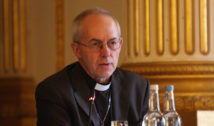
You Will Be Surprised How Religion Has Changed in America
- By Derek Welch --
- 08 Sep 2017 --

Survey shows that political parties will need to change their approach
A survey conducted by Pew Research Center found that approximately 27 percent of adults consider themselves spiritual but not religious. This figure is an increase of eight percentage points within a space of five years. The survey was done over a space of a little over a month- April 25 to June 5, 2017.
You Will Be Surprised How Religion Has Changed in America[/tweetthis]
The increase in people professing to be spiritual but not religious is broad based. Both men and women answered the same. It has crossed ethnicity, with whites, blacks, and Hispanics. Individuals of different educational attainments and ages have said the same. Both Republicans and Democrats have witnessed people from their party expressing identical views.
To make it clear, the methodology behind the survey did not ask in a direct manner whether the label of ‘spiritual, not religious’ can be used to describe them. Rather, two questions were asked in its place: whether the respondent considers himself or herself a religious person? And the second question substitutes the word religion for spirituality. The published results are a combo of the two given answers.
Other than the people who considered themselves spiritual but not religious, about 48 percent claim to be both religious and spiritual. About six percent identify themselves as religious only. Approximately 18 percent of people answered in the negative about both questions. It is another matter that only about 54 percent of American adults consider themselves to be religious. This is a plunge of 11 points from the 2012 figure. However, about 75 percent claim to be spiritual. This number has remained almost the same for a number of years. The increase of spiritual and not religious has come at expense of those who considered themselves to be both. In fact, the number of people holding this thought has actually come down by 11 points within 2012 to 2017.
The Pew results have far reaching consequences for both Republicans and Democrats. It means that the voter base is realigning in their religious composition. Both parties will have to change accordingly. For the GOP, it no longer cannot depend on white Christians to get votes. This is as these specific demographic is not only declining but also aging. Younger white Christians are now rarely seen inside churches. For Democrats, the problem is appealing to increasingly diverse religious voters. They must craft a message which will appeal to all faith traditions.


















